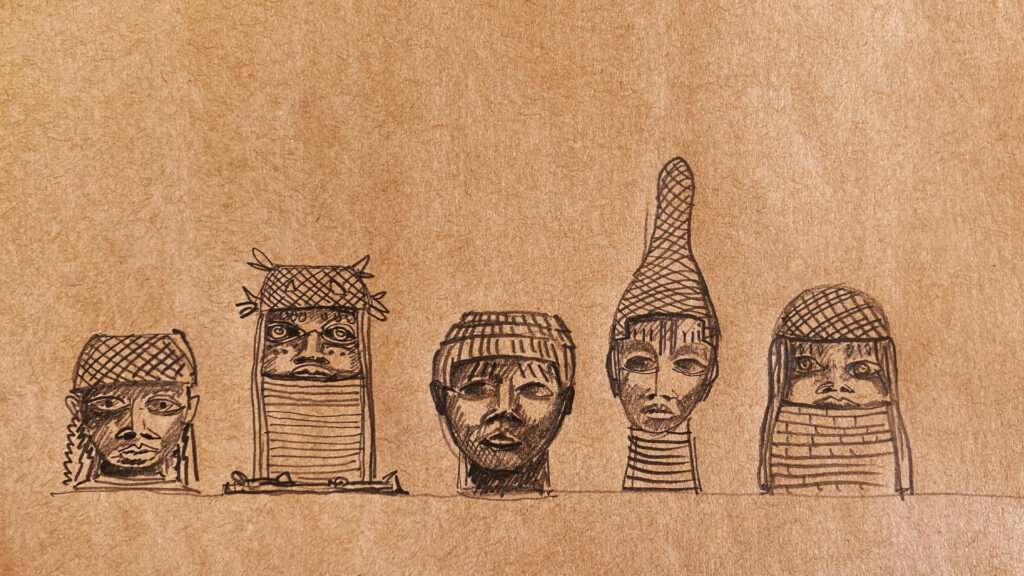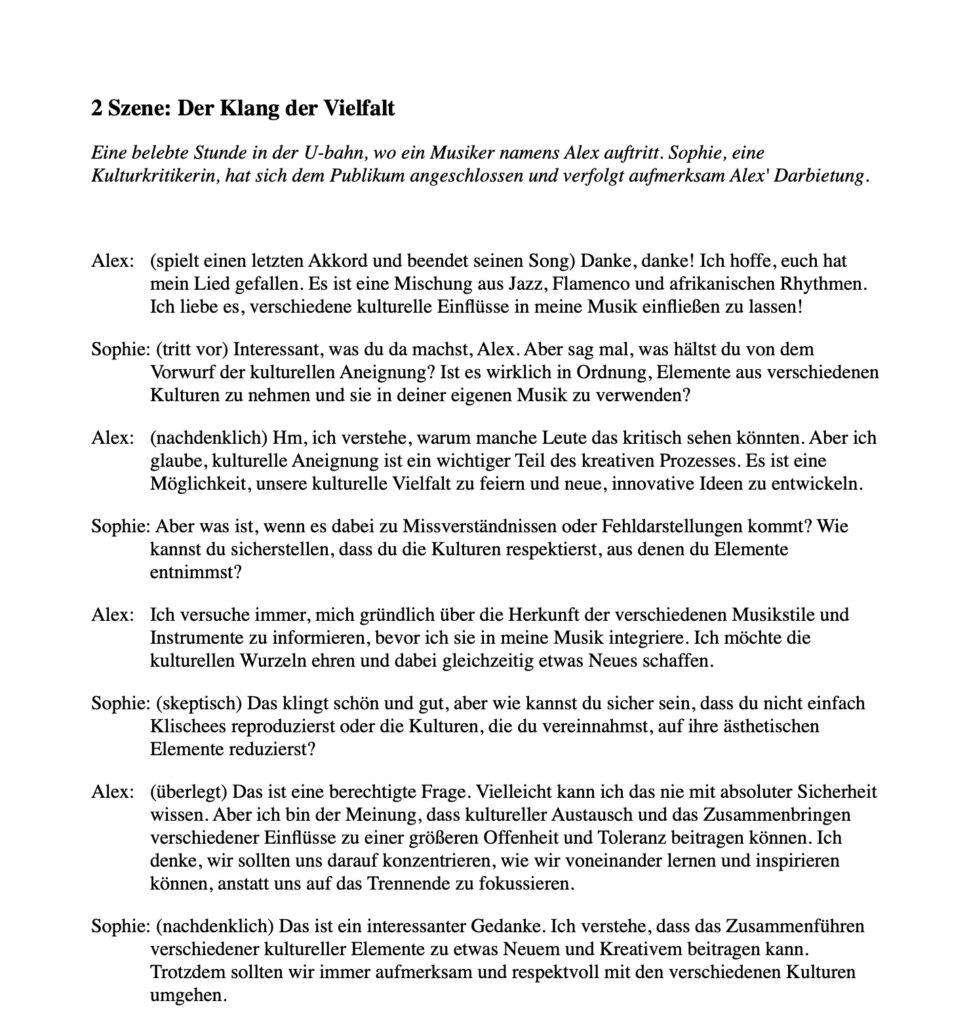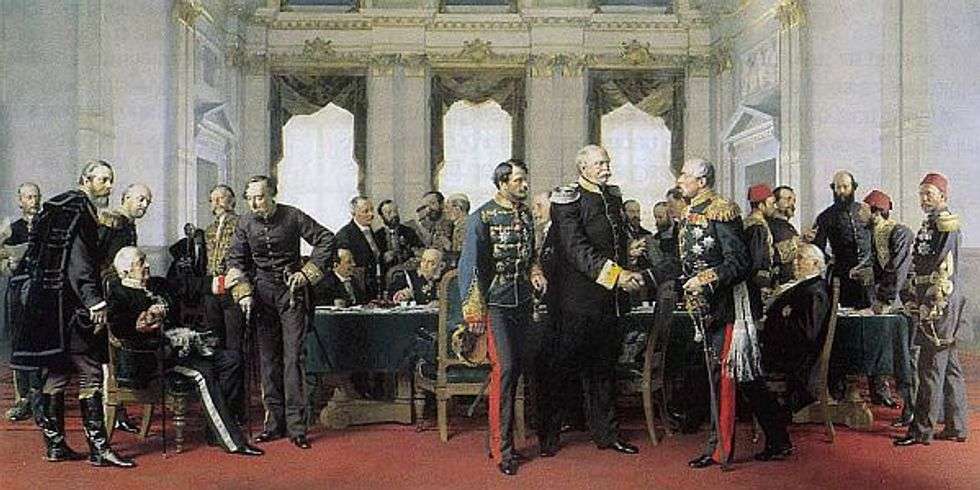RESEARCH
A Play on Cultural Appropriation within #FondsDaku
As an immigrant from Eastern Europe, I have limited knowledge about the history and culture of People of Color. I often wondered if my authorship of a play development of Bénin Berlin would not serve the very problem I was trying to address:
CULTURAL APPROPRIATION.
Nevertheless, my experience of living between two cultures allowed me to pursue my artistic interests. I realized that there is no solution to the problem of colonial positions. It is important to understand what actions are considered cultural appropriation and the impact this has on affected communities. Although my artistic freedom was promoted, this can also be considered cultural appropriation. The problem thus goes endlessly in circles and affects the entire history of the development of culture and art, which is based on reciprocity.

DRAMATURGY of the playwrite
Five dramatic main characters
The curtain opens and five people enter the stage. Each of them represents a different perspective on cultural appropriation. They are still strangers to each other, but soon begin to speak to each other.
Character 1: The activist who speaks out against cultural appropriation.
Character 2: The artist who draws inspiration from different cultures.
Character 3: The researcher who studies the effects of cultural appropriation.
Character 4: The traveler who tours and appreciates diverse cultures.
Character 5: The entrepreneur who uses cultural appropriation to create trends.
My goal was to address the physical presence and absence of Africans during the partition of the continent and to point to the contemporary effects of colonialism in the global South. In doing so, I characterized the different colonial positions separately to develop five dramatic characters. My focus was on developing different positions and representations of interest.
To juxtapose the characters, I developed a mythical chorus to symbolize the absence of Africans at the Berlin Congo Conference. A challenge was to select relevant information for scenic structure. I focused on essential facts and developed a dramaturgical version with prologue, acts, interludes, epilogue, five characters and a chorus.
The History of the Berlin Congo Conference 1884/85
II focused on the history of the Berlin Congo Conference, using various sources such as online articles, encyclopedias. In addition, I watched and analized the documentary film:
1885: Der Sturm auf Afrika – Ein Kontinent wird geteilt.
Benin-Bronzes
In the second phase, I focused on the Humboldt Forum Berlin and the creation of my own material study. For this purpose, I visited the exhibition in the new Africa Wing several times and created my own catalog of the classical bronze objects as well as contemporary positions from Nigeria. I was particularly interested in the arrangements in space and the effect on the viewer, as well as the increased use of textile, sculpture, and rosaries alongside bronze. Through these studies, scenographic ideas for the piece developed, for example the decision to have the piece set in a museum café.
Additional Resource https://digitalbenin.org/


Modelling and Channeling the Mini-Bronzes
Inspired by the “Oba heads” exhibited in the Humboldt Forum Berlin, I modeled a series of terracotta. Later I placed these in various constellations in nature, “channeled” them and from them wrote texts about an “invisible world and unheard voices”. The connection between the visible and the invisible is rooted in African art to this day and helped me to develop dialogues, scenic conflicts of the five characters as well as monologues of the choir.
The Bénin-Berlin issue is complex and sensitive. My play development tries to present this difficult debate in dramatic form and to embody the stories with texts, scetches and objects.



Benin Choir of Masks
Designing the Scenes of the Play
For the scenography, I chose as the main element the original table in the Red City Hall, where the Berlin Congo Conference took place. From this, a drawn storyboard was developed with scenic moments of the development of the piece.
- Fashion Boutique
- Metro-Station
- Café
- Salon









Supported by Fonds Darstellende Künste with funds from the Federal Government Commissioner for Culture and the Media within the program NEUSTART KULTUR. #TakeHeart | Rechercheförderung











